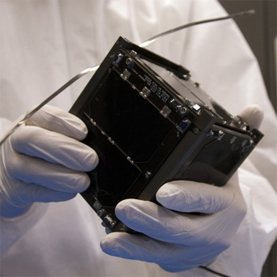Sending Experiments into Orbit Affordably
Tiny, standardized spacecraft are making orbital experiments affordable to even the smallest research groups.
Developing, testing, launching and operating a space science mission typically costs hundreds of millions to billions of dollars, but a new breed of satellites lowers the price tag to just $100,000 or so.
These cubic, one-liter, one-kilogram satellites, called CubeSats, are designed to be launched in batches and can piggyback on other space missions, thus dramatically reducing launch costs. CubeSats originated in a set of technical specifications proposed as a standard in 2000 by aerospace engineer Bob Twiggs, formerly of Stanford University’s Space and Systems Development Laboratory, and Jordi Puig-Suari of California Polytechnic State University, San Luis Obispo.
The two engineers wanted to make space science affordable for most science laboratories and even for college and high school projects. CubeSats have been embraced as an educational tool, because a team of students can design and build one in just two years, and students can get a holistic feeling of what space science is about.
The concept has spread—even NASA and the National Science Foundation have joined the club—and dozens of teams have started CubeSat projects. At least two dozen have already completed their missions successfully.









